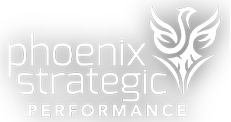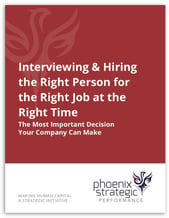This blog was co-authored by Joanne Flynn, Jim Bosserman, and Debbie Gower. This article combines perspectives and research from three strategic performance and learning and development professionals.
What is the role of Learning & Development (L&D) in an organization’s growth and transformation?
What is the role of L&D in dealing with continuous change?
6 Key L&D Strategic Issues
Learning & Development is critical to an organization’s success. Although the “war for talent” focused attention and efforts on recruiting since the late 1990’s[1], the “war to develop talent”[2] recently emerged more prominently on CEO agendas. Why? Concerns over talent shortages and skill gaps have created obvious obstacles to achieving business performance and transformation goals.
As a result, the investment and ROI to elevate organizational learning functions has become just as, if not more, important as “buying” talent through the recruiting function.
1. The L&D / Business Agility Connection
Strategically focused L&D targets and tracks an organization’s business agility. This is critical for an organization to achieve business growth goals or deliver an anticipatory response to environmental and/or internally generated changes. Today, L&D must be seen as a business imperative.
2. L&D’s Potential for Organizational Impact
Admittedly, L&D does not singularly enable an organization’s success. It is, however, clearly and significantly one of the most valuable tools due to its impact on the “minds and hearts” of the workforce. Effective L&D importantly touches both the “mind and heart” when it can answer two employee questions:
1. “What do I need to do my job?”
2. “What’s in it for me?”
Organizational performance and productivity expectations demand answers to the first question. Company culture and employee engagement goals respond to the second.
3. The L&D Proposition
When an organization is going through change, its ability to strategically leverage L&D to accelerate the business through the cycle of change can be a critical differentiator; employees who feel satisfied and successful are more engaged and perform at a higher level faster.
4. L&D Business Premises
- Accelerating through the change cycle can move an organization to peak performance faster.
- Peak performance delivers desired and planned strategic organizational results.
- L&D can prepare an organization to help balance overt optimism and lessen the depths of unfounded pessimism.
- L&D plays the most significant role by building competencies at the individual and organizational levels, speeding through the typical downward drop and accelerating movement toward peak performance.
Viewed this way, L&D must be considered a strategic initiative integral to any change event.
5. L&D, “Minds and Hearts” and Peak Performance
L&D plays off both the “minds and hearts” of people. The “mind” can create capable and competent individuals, while the “heart” can invoke a positive attitude and excitement. These fundamental elements impact the organization’s ability to achieve peak performance and desired outcomes.
6. Are You Truly a Learning Organization?
When organizations use L&D more strategically, where L&D is focused on developing and applying those competencies in the new strategy or environment, these organizations realize a significant lift in performance. In addition, they meet the expectations of the workforce, who have grown to expect L&D from a learning organization.
[1] Steven Hankin, McKinsey & Company, 1997
[2] Deloitte, Resetting Horizons – Human Capital Trends 2013
Do you want to better understand the six key strategic issues facing learning & development leaders? We invite you to download the complete research article to get your organization's latest learning and development information.






